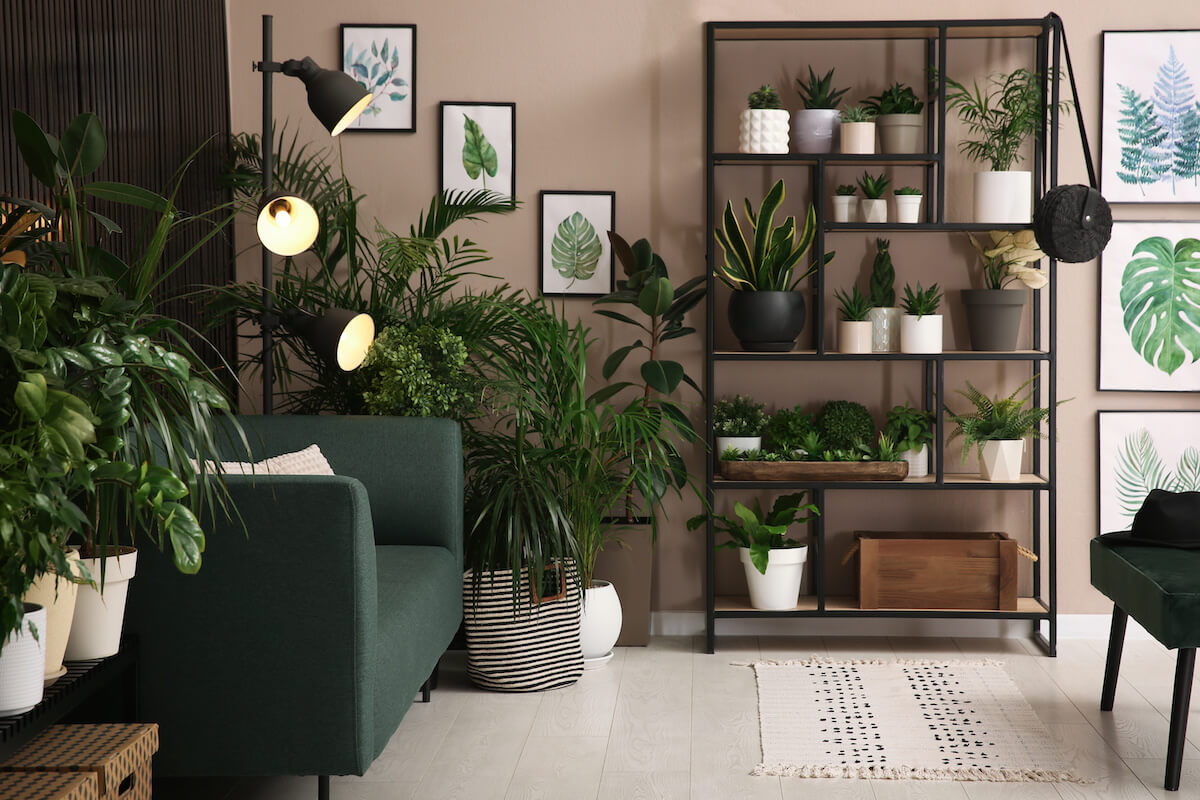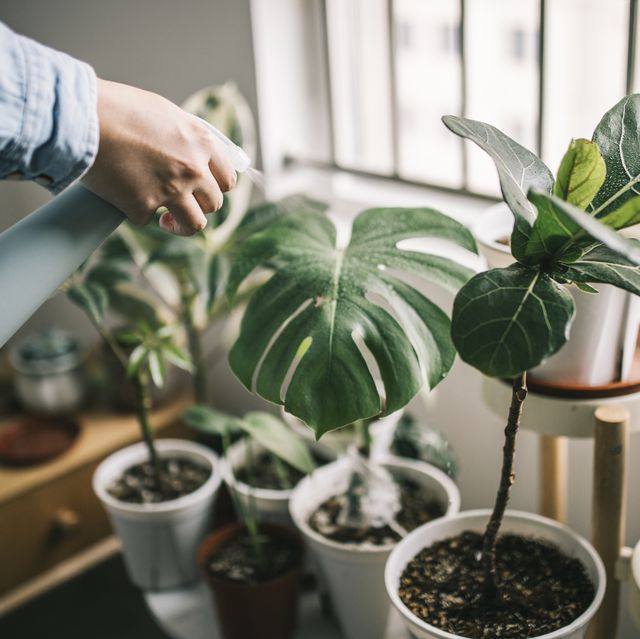Low Maintenance and Beautiful: Best Low-Light Indoor Plants for Your Home
Low Maintenance and Beautiful: Best Low-Light Indoor Plants for Your Home
Blog Article
Transform Your Home With Beautiful Low-Light Indoor Plants and Their Advantages
Integrating low-light interior plants into your home can significantly improve both the visual and ecological high quality of your space. These plants, which grow in dark conditions, offer not only as ornamental aspects but additionally as all-natural air purifiers, making them optimal for city residents or those with restricted sunlight direct exposure. As we explore the different kinds of low-light plants and their benefits, you may discover unexpected ways to incorporate them into your home that can transform your environments in means you may not have actually anticipated.
Advantages of Low-Light Plants
Low-light plants provide numerous benefits for indoor environments, making them a superb selection for both novice and experienced gardeners. One of the primary advantages is their adaptability to low-light problems, enabling individuals to improve their space without the need for substantial sunlight exposure. This characteristic makes them excellent for houses, workplaces, and other locations with limited natural light.

Additionally, incorporating low-light plants right into home design can boost the aesthetic allure of an area. Their lush vegetation and varied structures develop a soothing environment, adding to total health. Lastly, the visibility of greenery has actually been linked to decreased anxiety degrees and improved efficiency, making low-light plants a useful choice for boosting both physical and psychological wellness in interior setups.
Leading Low-Light Indoor Plants
While lots of interior plants prosper in intense light, several types are specifically fit for low-light conditions, making them optimal for numerous indoor rooms. One preferred selection is the Serpent Plant (Sansevieria), known for its striking upright fallen leaves and resilience, needing marginal treatment. An additional exceptional choice is the Pothos (Epipremnum aureum), which features heart-shaped fallen leaves and can route perfectly from racks or wall mounts, thriving in reduced light and adding a rich touch.
The ZZ Plant (Zamioculcas zamiifolia) is celebrated for its glossy leaves and capability to stand up to overlook, making it perfect for active way of lives. Likewise, the Peace Lily (Spathiphyllum) not only tolerates low light but additionally produces magnificent white flowers, enhancing any type of area's visual.
For a special touch, take into consideration the Cast Iron Plant (Aspidistra elatior), which indeed measures up to its name, flourishing in the darkest corners of your home. The Chinese Evergreen (Aglaonema) supplies a selection of leaf patterns and colors while being incredibly forgiving in low-light conditions. These plants not only beautify indoor settings yet additionally add to air filtration, enhancing your space.
Care Tips for Low-Light Plants

Watering methods are essential; these plants frequently favor slightly dry conditions. Overwatering can lead to root rot, so make certain that the leading inch of dirt is completely dry before sprinkling once more. Usage pots with drain holes to enable excess wetness to leave.
Humidity is find this one more vital aspect. Numerous low-light plants, such as brushes and tranquility lilies, advantage from higher humidity degrees. To boost moisture, take into consideration misting the fallen leaves or putting a tray of water near the plants.
Fertilization needs to be approached with care. Throughout the expanding period, use a watered down, well balanced fluid fertilizer monthly to sustain development, however stay clear of feeding during the inactive winter season.

Imaginative Ways to Present Plants
Interior plants can function as fascinating focal points in any type of space, enhancing both visual allure and ambiance. Innovative displays can raise the visual influence of low-light plants, making them an essential component of your home decoration. One reliable technique is to use tiered plant stands, which allow you to display numerous plants at differing heights while optimizing floor room.
Hanging planters are an additional innovative option, creating a feeling of deepness and drawing the eye up. Take into consideration macramé wall mounts or wall-mounted shelves to introduce an unique appearance and design.
For an extra organized approach, usage geometric terrariums or glass containers to house your plants, including a modern touch to your interior yard. You go can also repurpose classic things, such as teacups or wood dog crates, for a diverse display that shows your character.
Enhancing Home Ambiance With Plants
Integrating low-light plants right into your home not just boosts visual charm but also adds dramatically to the total atmosphere. These plants function as all-natural design elements, presenting a sense of tranquility that can change any kind of space. The presence of plant promotes a calming ambience, which is especially beneficial in high-stress atmospheres such as home offices or living spaces.
Low-light plants, such as serpent plants, pothos, and ZZ plants, are not only visually pleasing but additionally improve indoor air high quality by filtering system contaminants. This dual feature enhances the setting additionally, producing a healthier space (Best low-light indoor plants). The critical positioning of these plants can also influence the perception of space; for circumstances, high plants can draw the eye upwards, making ceilings show up higher and spaces more large
In addition, differing textures and colors of foliage include deepness to interior decoration, allowing for innovative expression in home styling. Whether put on racks, in corners, or as centerpieces, low-light plants can boost the state of mind of any area. In recap, integrating these plants right into your home is an efficient method to cultivate a cozy, inviting atmosphere while gaining the advantages of enhanced air high quality and aesthetic adaptability.
Verdict
Integrating low-light interior plants into home settings supplies many advantages, including enhanced visual appeal and enhanced air high quality. These resilient plants, such as the Serpent Plant and Peace Lily, need marginal light and maintenance, making them appropriate for why not try these out diverse way of livings.
While many interior plants grow in intense light, numerous types are specifically fit for low-light conditions, making them suitable for various indoor spaces. One efficient approach is to use tiered plant stands, which permit you to showcase numerous plants at differing elevations while maximizing flooring area.
Low-light plants, such as snake plants, pothos, and ZZ plants, are not only visually pleasing but also improve indoor air high quality by filtering system pollutants. Best low-light indoor plants. The strategic placement of these plants can also affect the understanding of room; for circumstances, high plants can attract the eye upward, making ceilings show up greater and areas more large
These resistant plants, such as the Serpent Plant and Tranquility Lily, require marginal light and maintenance, making them suitable for diverse way of livings.
Report this page